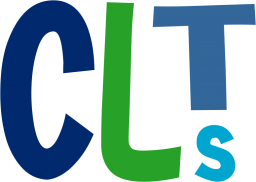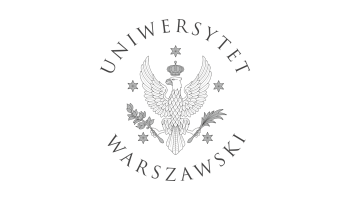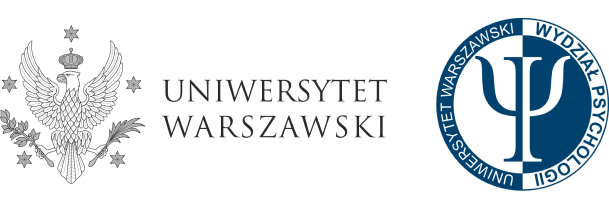MULTILADA
CLT

Hva er CLT?
CLT er en billedbasert test, utviklet for kartlegging av forståelse og produksjon av substantiver og verb via fire deltester. Hver av de fire deltestene består av 32 oppgaver. CLT brukes typisk i studier av flerspråklige og enspråklige barn i alderen 3-7 år.
Hver språkversjon av CLT er utviklet etter samme prosedyrer og kriterier. Derfor er ikke CLT oversatt, men konstrueres separat for hvert språk, for sammenligning på tvers av språk. Reglene for konstruksjonen av CLT er basert på ordenes semantikk, tilegnelsesalder, og fonologisk og morfologisk kompleksitet.
CLT er en del av testbatteriet Language Impairment Testing in Multilingual Settings (LITMUS) og ble opprinnelig utviklet i COST Action IS0804 (2010–2013) 'Language Impairment in a Multilingual Society: Linguistic Patterns and the Road to Assessment' (www.bi-sli.org).
Afrikaans
Southwood
Arabisk(Libanesisk)
Khoury Aouad Saliby, Kouba-Hreich & Messarra
Engelsk (Amerikansk)
Haman, Miller, Wodniecka, Koegler & Łuniewska
Engelsk (Britisk)
Haman, Łuniewska, Polisenka, Mieszkowska & Chiat
Engelsk (Sør-Afrikansk)
Southwood
Finsk
Kunnari
Hebraisk
Armon-Lotem & Harel
Irsk
O'Toole
IsiXhosa
Southwood & Potgieter
Italiensk
Roch, Levorato & Tedeschi
Kantonesisk
Chan, Kan & Hamdani
Katalansk
Gavarró & Montes
Litauisk
Blažienė, Dabašinskienė & Łuniewska
Luxemburgsk
Engel De Abreu, Gilles, Łuniewska & Haman
Maltesisk
Gatt & Łuniewska
Malay
Yap, Razak, Treffers-Daller, Łuniewska & Haman
Mandarin
Kuo
Nederlandsk
van Wonderen, Blom, Boerma, van Dijk, Janssen, & Unsworth
Norsk
Simonsen, Hansen & Łuniewska
Persisk
Talebi
Polsk
Haman, Łuniewska, Krysztofiak, Pomiechowska, Szewczyk & Wodniecka
Russisk
Gagarina & Nennonen
Serbisk 1
Vuksanović & Bjekić
Serbisk 2
Anđelković, Popović & Savić
Skotskgælisk
Chondrogianni, Butcher & Cox
Slovakisk
Kapalková, Slančová, Łuniewska & Haman
Spansk
Cantu
Svensk
Ringblom, Håkansson & Lindgren
Tsjekkisk
Łuniewska & Smolík
Tyrkisk
Yılmaz-Çifteci, Tunçer, Ünal & Ege
Tysk
Rinker & Gagarina
Urdu
Hamdani, Kan & Chan
Ungarsk
Ehret & Marton
Vest-Armensk
Gureghian, Abboud & Tuller
Hvordan konstrueres en CLT?
Hver språkversjon av CLT er konstruert i henhold til det samme settet av kriterier. Valget av målord for hvert språk er basert på to hovedparametre for ords vanskelighetsgrad: subjektiv tilegnelsesalder for ord, og en kompleksitetsindeks som tar hensyn til de fonologiske og morfologiske egenskapene til et ord.
Konstruksjonen av en CLT innebærer fem trinn:
Detaljert prosjektinformasjon
Utviklingen av CLT koordineres av Magdalena Łuniewska og Ewa Haman
1. Navngivningsstudie
Mål: Å forberede listen over kandidatord på språket.
Beskrivelse: Voksne morsmålsbrukere av målspråket navngir bildene som er valgt fra settet med over 450 CLT-bilder. I tillegg vurderer brukerne CLT-bildenes egenskaper.
Resultat: De mest brukte navnene som blir gitt til bildene blir til listen over kandidatord som blir brukt i de neste trinnene. Målordene skal senere velges blant disse kandidatordene.
2. AoA-studie (tilegnelsesalder)
Mål: Å estimere ordenes vanskelighetsgrad, (basert på morsmålsbrukeres intuisjoner om når de lærte et ord).
Beskrivelse: For hvert av kandidatordene svarer morsmålsbrukere på spørsmålet: Når lærte du ordet ‘X’? Gjennomsnittet av rangeringene gitt av morsmålsbrukerne blir deretter brukt som et mål på ordens vanskelighetsgrad.
Resultat: Gjennomsnittlig rangering for hvert ord vil bli brukt som et av målene for vanskelighetsgrad.
Publikasjoner: AoA-rangeringene er publisert for 32 språk: Łuniewska et al., 2016 og Łuniewska et al., 2019, for norsk i Lind et al., 2015.
3. Kompleksitetsvurdering
Mål: Å estimere ordenes vanskelighetsgrad (basert på ordenes egenskaper).
Beskrivelse: En lingvist som snakker målspråket gir detaljert informasjon om de fonologiske egenskapene (om ordet har frikativer i fremlyd, konsonantgruppe i fremlyd eller innlyd) og de morfologiske egenskapene (antall røtter i sammensatte ord, om ordet er avledet, antall suffikser og prefikser) til ordene. Kompleksitetsindeksen regnes ut på grunnlag av denne informasjonen.
Resultat: Kompleksitetsindeksen vil bli brukt som det andre målet på ordenes vanskelighetsgrad.
4. Konstruksjon
Mål: Å konstruere en CLT.
Beskrivelse: Målordene til deltestene for forståelse og produksjon velges på grunnlag av ordenes tilegnelsesalder og kompleksitet i henhold til de tverrspråklige reglene. CLT bør inneholde tidlig og seint tilegnede ord av varierende kompleksitet.
Resultat: En pilotversjon av CLT på målspråket er klar for en pilotstudie!
5. Pilotstudie
Mål: Å revidere pilotversjonen av en CLT.
Beskrivelse: Minst 10 enspråklige barn, vanligvis femåringer, blir testet med pilotversjonen av CLT. De bildene som barna har problemer med å kjenne igjen eller benevne, blir senere revidert bort.
Resultat: Den endelige versjonen av CLT-en er klar til å brukes i forskning!
Publikasjoner om CLT
Haman, E., Łuniewska, M., & Pomiechowska, B. (2015). Designing Cross-linguistic Lexical Tasks (CLTs) for bilingual preschool children. In S. Armon-Lotem, J. de Jong & N. Meir (Eds.). Methods for assessing multilingual children: disentangling bilingualism from Language Impairment. Bristol: Multilingual Matters.
Łuniewska, M., E. Haman & P. Hansen (2016). Is there a road to universal assessment of lexical knowledge in multilingual children? Cross-cultural aspects of Cross-linguistic Lexical Tasks. In H.-O. Enger, M. I. N. Knoph, K. E. Kristoffersen & M. Lind (Eds.), Helt fabelaktig! Festskrift til Hanne Gram Simonsen på 70-årsdagen: 147–165. Oslo, Norway: Novus Forlag.
Smolík, F., & Bytešníková, I. (2021). Validity of the SDDS: A 40-item vocabulary screening tool for 18- to 42-month olds in Czech. Journal of Communication Disorders, 93, 106146. https://doi.org/10.1016/j.jcomdis.2021.106146
van Wonderen, E. V., & Unsworth, S. (2020). Testing the validity of the Cross-Linguistic Lexical Task as a measure of language proficiency in bilingual children. Journal of Child Language, 1–25. https://doi.org/10.1017/S030500092000063X
Yap, N. T., Razak, R. A., Haman, E., Łuniewska, M., & Treffers-Daller, J. (2017). Construction of the Malay Cross-linguistic Lexical Task: A preliminary report. Language Studies Working Papers, 8, 47–61.
Yılmaz-Çifteci, N., & Tuncer, A. M. (2022). Validity and Reliability of the Cross-Lingusitic Lexical Task Turkish: Preliminary Study. Türkiye Klinikleri Sağlık Bilimleri Dergisi, doi: 10.5336/healthsci.2021-87316
CLT hos én- og flerspråklige barn:
Abbot-Smith, K., Morawska-Patera, P., Łuniewska, M., Spruce, M., & Haman, E. (2018). Using parental questionnaires to investigate the heritage language proficiency of bilingual children. Child Language Teaching & Therapy, 34(2), 155-170. https://doi.org/10.1177/0265659018780958
Altman, C., Goldstein, T., & Armon-Lotem, S. (2017). Quantitative and qualitative differences in the lexical knowledge of monolingual and bilingual children on the LITMUS-CLT task. Clinical Linguistics & Phonetics, 31(11-12), 931-954. https://doi.org/10.1080/02699206.2017.1312533
Baumgartner, R. & Rinker, T. (2018). Mehrsprachigkeit am Übergang von Kita und Grundschule – Potenziale von Kindern und Fachkräften aufdecken und entfalten. In A. Blechschmidt & U. Schräpler (Eds.), Mehrsprachigkeit in Sprachtherapie und Unterricht, 129-145. Basel: Schwabe.
Bohnacker, U., Lindgren, J., & Öztekin, B. (2016). Turkish- and German-speaking bilingual 4-to-6-year-olds living in Sweden: Effects of age, SES and home language input on vocabulary production. Journal of Home Language Research, 1, 17-41. http://doi.org/10.16993/jhlr.26
dos Santos, C., & Hreich, E. K. (2019). Plurilinguisme au Liban: étude exploratoire du lexique des enfants avec TSA et méthodologie de l'évaluation. In XIXèmes rencontres internationales d'orthophonie: Troubles du spectre de l’autisme, recherche et orthophonie.
Gatt, D., Attard, D., Łuniewska, M. & Haman, E. (2017). The effects of bilingual status on lexical comprehension and production in Maltese five-year-old children: a LITMUS-CLT study. Clinical Linguistics and Phonetics, 31(11-12), 844-873. https://doi.org/10.1080/02699206.2017.1310930
Haman, E., Łuniewska, M., Hansen, P., Simonsen, H. G., Chiat, S., Bjekić, J., … Armon-Lotem, S. (2017). Noun and verb knowledge in monolingual preschool children across 17 languages: Data from cross-linguistic lexical tasks (LITMUS-CLT). Clinical Linguistics & Phonetics, 31(11-12), 818-843. https://doi.org/10.1080/02699206.2017.1308553
Hansen, P., M. Łuniewska, H.G. Simonsen, E. Haman, K. Mieszkowska, J. Kołak and Z. Wodniecka (2019). Picture-based vocabulary assessment vs. parental questionnaires: A cross-linguistic study of bilingual assessment methods. International Journal of Bilingualism, 23(2), 437-456. DOI: https://doi.org/10.1177/1367006917733067
Hansen, P., H. G. Simonsen, M. Łuniewska and E. Haman (2017). Validating the psycholinguistic aspects of CLT: Evidence from Polish and Norwegian. Clinical Linguistics & Phonetics, 31(11-12): 910-930. https://doi.org/10.1080/02699206.2017.1307455
Horská, T., & Kapalková, S. (2018). Hodnotenie slovnej zásoby v predškolskom veku. Logopaedica, 20(1), 15 - 19.
Kapalková, S., & Slancová, D. (2017): The vocabulary profile of Slovak children with primary language impairment compared to typically developing Slovak children measured by LITMUS-CLT. Clinical Linguistics & Phonetics, 31(11-12): 893-909. https://doi.org/10.1080/02699206.2017.1308016
Khoury Aouad Saliby, C., Dos Santos, C., Kouba Hreich, E., & Messarra, C. (2017). Assessing Lebanese bilingual children: The use of Cross-linguistic Lexical Tasks in Lebanese Arabic. Clinical Linguistics & Phonetics, 31(11-12), 874-892. https://doi.org/10.1080/02699206.2017.1308554
Lindgren, J. (2019). Comprehension and production of narrative macrostructure in Swedish: A longitudinal study from age 4 to 7. First Language, 39(4), 412-432. https://doi.org/10.1177/0142723719844089
Lindgren, J., & Bohnacker, U. (2020). Vocabulary development in closely-related languages: Age, word type and cognate facilitation effects in bilingual Swedish-German preschool children. Linguistic Approaches to Bilingualism, 10(5), 587–622. https://doi.org/10.1075/lab.18041.lin
Lindgren, J., Reichardt, V., & Bohnacker, U. (2020). Character introductions in oral narratives of Swedish–German bilingual preschoolers. First Language, 1-29. https://doi.org/10.1177/0142723719897440
Łuniewska, M., Wójcik, M., Kołak, J., Mieszkowska, K., Wodniecka, Z., & Haman, E. (2021). Word knowledge and lexical access in monolingual and bilingual migrant children: Impact of word properties. Language Acquisition. https://doi.org/10.1080/10489223.2021.1973475
Pirchio, S., Gatt, D., Passiatore, Y., & Costa, S. (2020). La comunicazione tra insegnanti e bambini bilingui nella scuola dell’infanzia: una ricerca pilota in Italia e a Malta [Communication between teachers and bilingual children in pre-school: a pilot study in Italy and Malta]. Psicologia dell’Educazione, 1-2/2020, 75-92.
Plötner, K. & Rinker, T. (2020). Lexikalisches Lernen in einer italienisch-deutsch bilingualen Grundschulklasse. In H. Böttger, J. Festman & T. Müller (Eds.), Language Education and Acquisition research. Focusing Early Language Learning, 259-276. Bad Heilbrunn: Klinkhardt.
Polišenská, K., Kapalková, S., & Novotková, M. (2018). Receptive language skills in Slovak-speaking children with intellectual disability understanding words, sentences, and stories. Journal Of Speech, Language, And Hearing Research, 61(7), 1731-1742. https://doi.org/10.1044/2018_JSLHR-L-17-0029
Potgieter, A. P. (2016). Lexical and grammatical development in trilingual speakers of isiXhosa, English and Afrikaans. South African Journal of Communication Disorders, 63(2), 1–11. https://doi.org/10.4102/sajcd.v63i2.141
Potgieter, A. P., & Southwood, F. (2016). A comparison of proficiency levels in 4-year-old monolingual and trilingual speakers of Afrikaans, isiXhosa and South African English across SES boundaries, using LITMUS-CLT. Clinical Linguistics & Phonetics, 30(2), 87–100. https://doi.org/10.3109/02699206.2015.1110715
Ringblom, N., & Dobrova, G. (2019). Holistic Constructions in Heritage Russian and Russian as a Second Language: Divergence or Delay? Scando-Slavica, 65(1), 94–106. https://doi.org/10.1080/00806765.2019.1586577
Trinnene i konstruksjon av CLT-er
Łuniewska, M., Haman, E., ArmonLotem, S., Etenkowski, B., Southwood, F., Andelkovic, D., ..., Unal - Logacev, U. (2015). Ratings of age of acquisition of 299 words across 25 languages. Is there a crosslinguistic order of words? Behavior Research Methods, 48(3), 1154-1177. https://doi.org/10.3758/s13428-015-0636-6
Łuniewska, M., Wodniecka, Z., Miller, C.A., Smolík, F., Butcher, M., Chondrogianni, V., …, Haman. (2019) Age of acquisition of 299 words in seven languages: American English, Czech, Gaelic, Lebanese Arabic, Malay, Persian and Western Armenian. PLoS ONE, 14(8): e0220611. https://doi.org/10.1371/journal.pone.0220611
Avhandlinger som har brukt CLT
Chyl, K. (2015). Vocabulary Size of Bilingual Preschool Children learning Polish as their first language (Unpublished master’s thesis). University of Warsaw.
Fullana-Garcia, C. (2019). Vocabulary Development in English-Speaking Children with Language Impairment in English Mainstream and Gaelic-Medium Education. (Unpublished master’s thesis), PPLS, University of Edinburgh.
Hansen, P. (2017). In the beginning was the word. A study of monolingual and bilingual children’s lexicons (Unpublished PhD thesis). University of Oslo. https://www.duo.uio.no/bitstream/handle/10852/58965/PhD-Hansen-DUO.pdf?sequence=5&isAllowed=y
Judge-Clayden, F. (2020). Lexical and Phonological Skills in Bilingual Children in Immersion Education. (Unpublished undergraduate dissertation). PPLS, University of Edinburgh
Kołak, J. (2020). Language environment and vocabulary development of the Polish-English bilingual children in the United Kingdom and Ireland (Unpublished PhD thesis). University of Warsaw. https://depotuw.ceon.pl/bitstream/handle/item/3811/2500-DR-PS-89060712866.pdf?sequence=1
Komeili., M (2020). Assessing the Language Abilities of Farsi-English Bilingual Children and the Effects of Internal and External Factors on their language skills (Unpublished doctoral dissertation). University of Reading.
Lindgren, J. (2018). Developing narrative competence: Swedish, Swedish-German and Swedish-Turkish children aged 4-6 (PhD thesis). Studia Linguistica 19. Uppsala: Uppsala University.
http://www.diva-portal.org/smash/get/diva2:1193219/FULLTEXT01.pdf
Łuniewska, M. (2018). Rozmiar i organizacja słownika umysłowego u dzieci o typowym rozwoju językowym i dzieci z ryzykiem specyficznego zaburzenia językowego SLI [The size and organization of the mental lexicon in typically developing children and children under the risk of specific language impairment] (Unpublished PhD thesis). University of Warsaw. https://depotuw.ceon.pl/bitstream/handle/item/2782/2500-DR-PSY-151789.pdf?sequence=1
Markiewicz, S. (2014). Lexical Processing of Nouns & Verbs An Insight into Noun Bias in Polish Monolingual Preschool Children (Unpublished master’s thesis). University of Warsaw.
Montes Salarich, L. (2014) Lexical acquisition in Catalan preschool children (Unpublished bachelor’s thesis). Universitat Autònoma de Barcelona, Bellaterra. https://ddd.uab.cat/record/126769
Yılmaz-Çifteci, N. (work in progress). CLT Turkish: Validity and Reliability Study (Unpublished doctoral dissertation). Anadolu University, Eskişehir, Turkey.
Öberg, Linnéa (2020). Words and non-words: Vocabulary and phonological working memory in Arabic-Swedish-speaking 4–7-year-olds with and without a diagnosis of Developmental Language Disorder (PhD thesis). Studia Linguistica 27. Uppsala: Uppsala University. http://uu.diva-portal.org/smash/get/diva2:1477829/FULLTEXT03.pdf
Öztekin, Buket (2019). Typical and atypical language development in Turkish-Swedish bilingual children aged 4–7 (PhD thesis). Studia Linguistica 25. Uppsala: Uppsala University. http://uu.diva-portal.org/smash/get/diva2:1371412/FULLTEXT01.pdf
Potgieter, Anneke Perold (2014). The role of input in the early trilingual acquisition of English, Afrikaans and isiXhosa (PhD thesis). Stellenbosch: Stellenbosch University. https://core.ac.uk/download/pdf/37436639.pdf
Sirviö, S. (2015). Neljävuotiaiden lasten sanaston taso ja perheen lukutottumukset [Lexical skills of 4-year-olds and shared book reading] (Unpublished master’s thesis). University of Oulu.
Toivola, H. (2015). Kaksivuotiaiden lasten sanasto [Lexical skills of 2-year-olds] (Unpublished master’s thesis). University of Oulu.
Vartiainen, P. (2015). Kolmevuotiaiden lasten tuottavan sanaston taso ja morfologiset taidot [Expressive vocabulary of 3-year-olds and its association to morphosyntactic skills] (Unpublished master’s thesis). University of Oulu.
Yılmaz-Çifteci, N. (2022). Diller arası sözcük bilgisi testi Türkçe (CLT-TR): Geçerlik ve güvenirlik çalışması. [Cross-linguistic lexical task-Turkish (CLT-TR): Validity and reliability study]. (Unpublished PhD thesis). Anadolu University.
CLT brukes også i forskning
- 2020 - ongoing: Polish and Norwegian language and world knowledge development in mono- and multilingual children funded by Norway Grants via National Science Centre (1,500,000 EUR); PIs: Ewa Haman, University of Warsaw & Nina Gram Garmann, Oslo Metropolitan University & MultiLing, University of Oslo
- 2020 - 2021: Lexical Development of English-Chinese Preschoolers funded by Fullbright Foundation (13 000 USD); PI: Jenny Yichun Kuo, National Chiayi University
- 2020 - 2021: Supporting children with and without developmental language disorders in Gaelic-medium primary education - Phase II funded by Bord na Gaidhlig - Gaelic Language Board (25 000 GBP); PI: Vasiliki Chondrogianni, University of Edinburgh
- 2019 - 2023: Tweetalige Ontwikkelingsprofielen funded by Royal Dutch Kentalis; HandicapNL; SIAC; PIs: Lisa Verbek, Ludo Verhoeven, Constance Vissers & Mirjam Blumenthal, Radboud University & Royal Dutch Kentalis
- 2019 - 2022: Assessing the Narrative and Lexical Abilities of Urdu-Cantonese Bilingual Preschool Children in Hong Kong: Establishing Groundwork on their Family Language (Urdu) Abilities for Improving the Differentiation of South Asian Ethnic Minority Children with and without Language Impairments funded by Hong Kong Research Grants Council (930 000 HKD); PIs: Angel Chan & Saboor Zafar Hamdani, The Hong Kong Polytechnic University
- 2019 - 2021: Assessing the narrative and lexical abilities of Urdu-Cantonese bilingual preschool children in Hong Kong: Establishing groundwork on their school and community language (Cantonese) abilities for improving the differentiation of South Asian ethnic minority children with and without language impairments funded by The Hong Kong Polytechnic University (756 000 HKD); PIs: Angel Chan & Rachel Kan, The Hong Kong Polytechnic University
- 2019 - 2021: Interdisciplinary Research Network funded by Berliner Senat (200 000 EUR); PI: Natalia Gagarina, ZAS
- 2019 - 2021: LITMUS language assessment tests for multilingual children in the Netherlands funded by KF Heinfonds and Utrechts Universiteitsfonds (40 000 EUR); PI: Elma Blom, University of Utrecht
- 2018 - 2022: MultiMind funded by European Union’s Horizon2020 (255 000 EUR); PI: Tanja Rinker, Catholic University of Eichstätt-Ingolstadt & Maria Luisa Lorusso, Associazione La Nostra Famiglia ‘Istituto Scientifico Eugenio Medea’
- 2018 - 2021: An application of Chinese Picture Vocabulary Test funded by Ministry of Science and Technology, Taiwan (1 747 000 NT); PI: Jenny Yichun Kuo, National Chiayi University
- 2017 - 2018: Supporting children with and without developmental language disorders in Gaelic-medium primary education - Phase I funded by Bord na Gaidhlig - Gaelic Language Board (25 000 GBP); PI: Vasiliki Chondrogianni, University of Edinburgh
- 2015 - 2016: Bilingual assessment of child lexical knowledge: new method for Polish, Czech, Slovak and Hungarian funded by Visegrad Fund (17 060 EUR); PI: Ewa Haman, University of Warsaw
- 2014 - 2019: BiLI-TAS Language impairment or typical language development? Developing methods for linguistic assessment of bilingual children in Sweden funded Swedish Research Council; PI: Ute Bohnacker, Uppsala University
- 2013 - 2017: The size and organization of the mental lexicon in typically developing children and children under the risk of specific language impairment funded by the Polish Ministry of Science and Higher Education (200 000 PLN); PI: Magdalena Łuniewska, University of Warsaw
- 2010 - 2015: Bi-SLI-PL funded by Ministry of Science and Higher Education and National Science Centre; PIs: Ewa Haman, University of Warsaw & Zofia Wodniecka, Jagiellonian University in Kraków


Hvis du ønsker å
enten utvikle en ny språkversjon av CLT, eller å bruke en eksisterende versjon i forskningen din, vennligst ta kontakt:
